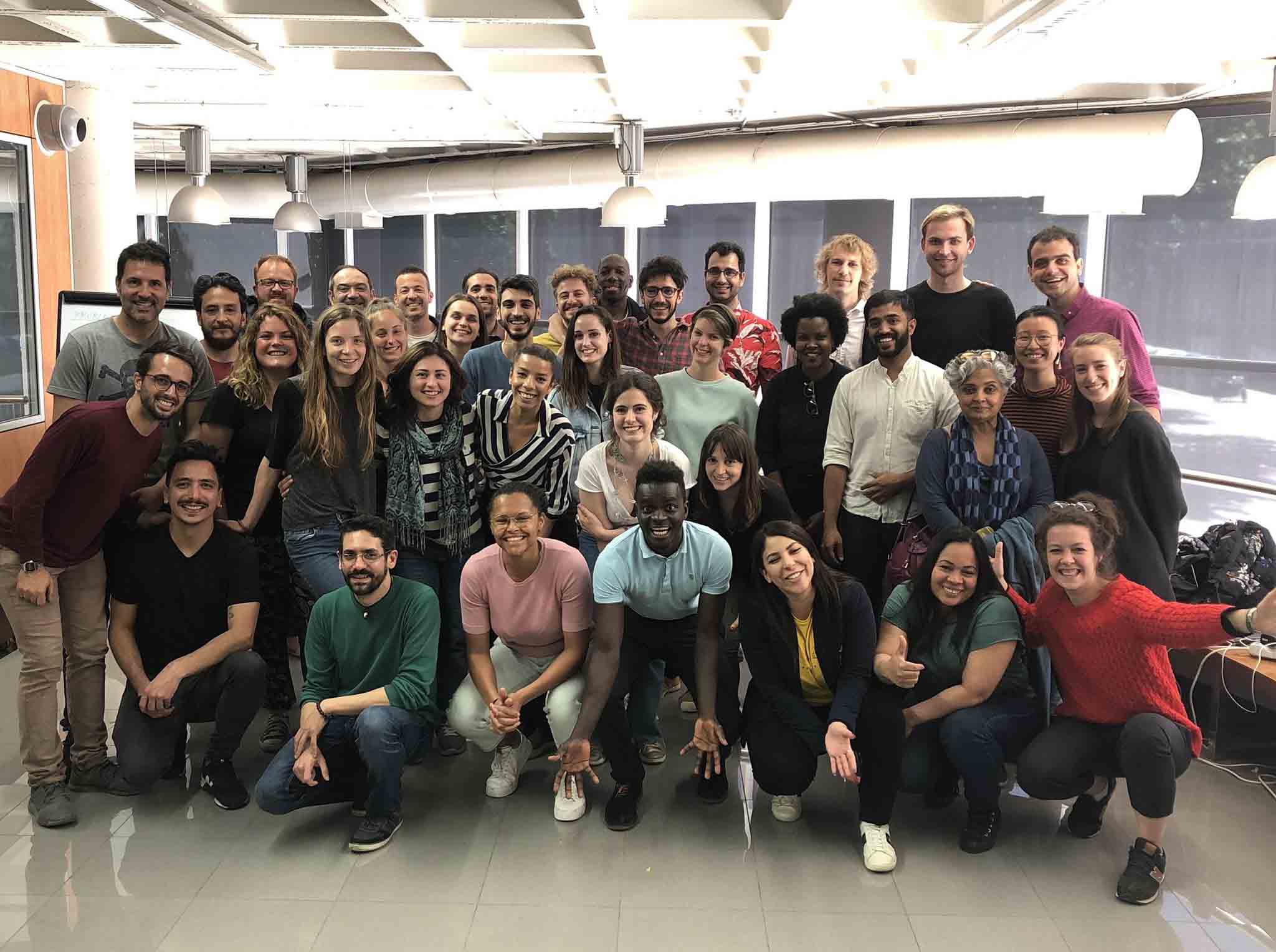What do displaced people and technologies have in common? The mobile phone. An international organization, Techfugees, has made it the core of its action, involving developers, NGOs and companies. Get to know.
(Featured Image: Techfugees’ hackathon in Barcelona, Spain, in May 2019 / Image Credit © Techfugees)
Among the top five questions asked by refugees upon arrival in a camp or a registration centre in Europe is “Where is the Wi-Fi?” and “Where do I get a SIM card? This was the conclusion of a study carried out by UNHCR, the UN refugee agency, in 2016, which struck Mike Butcher, editor at large of TechCrunch. Based on the observation that a large majority of refugees have Internet access in their pockets, he created Techfugees, which now brings together about fifty active volunteers all year round, many of them in Europe. The international organization has two core missions: to build an ecosystem of solutions and to create a “welcoming” technological universe, in other words a technological industry open to diverse partnerships and projects for refugees.
“Our aim is to develop technological tools to give access to information, health, education, employment and social inclusion to those who need it.”
Hackathons are particularly at the heart of Techfugees’ action. Since 2015, about thirty of them have been organized worldwide, involving developers, designers, refugees, locals and NGOs. The objective is to prototype solutions which respond to problems encountered on the field: finding a path, accommodation, learning new languages, as well as seeking information on asylum rights and employment. The whole art consists of gathering information from the host country and providing it through an interface, designed by and for those most concerned.
Just recently, Techfugees launched its second promotion to #TF4Women, its fellowship program #TF4Women. For six months, refugee women have access to training and mentorship required to secure a job within a technology company. This program launched has started in France and will be deployed across several European countries in the coming months.
“Each Techfugees event brings together a demographic of more than 50% refugees.”
Ambre Cerny, head of partnerships & communications at Techfugees, points out that actions are open to all displaced people, not just those with the legal status of “refugees”: “Our aim is to develop technological tools to give access to information, health, education, employment and social inclusion to those who need it.”
Each Techfugees event brings together a demographic of more than 50% refugees in the broadest sense of the word. A challenge won thanks to word of mouth, social networks and relays via NGO partners.
